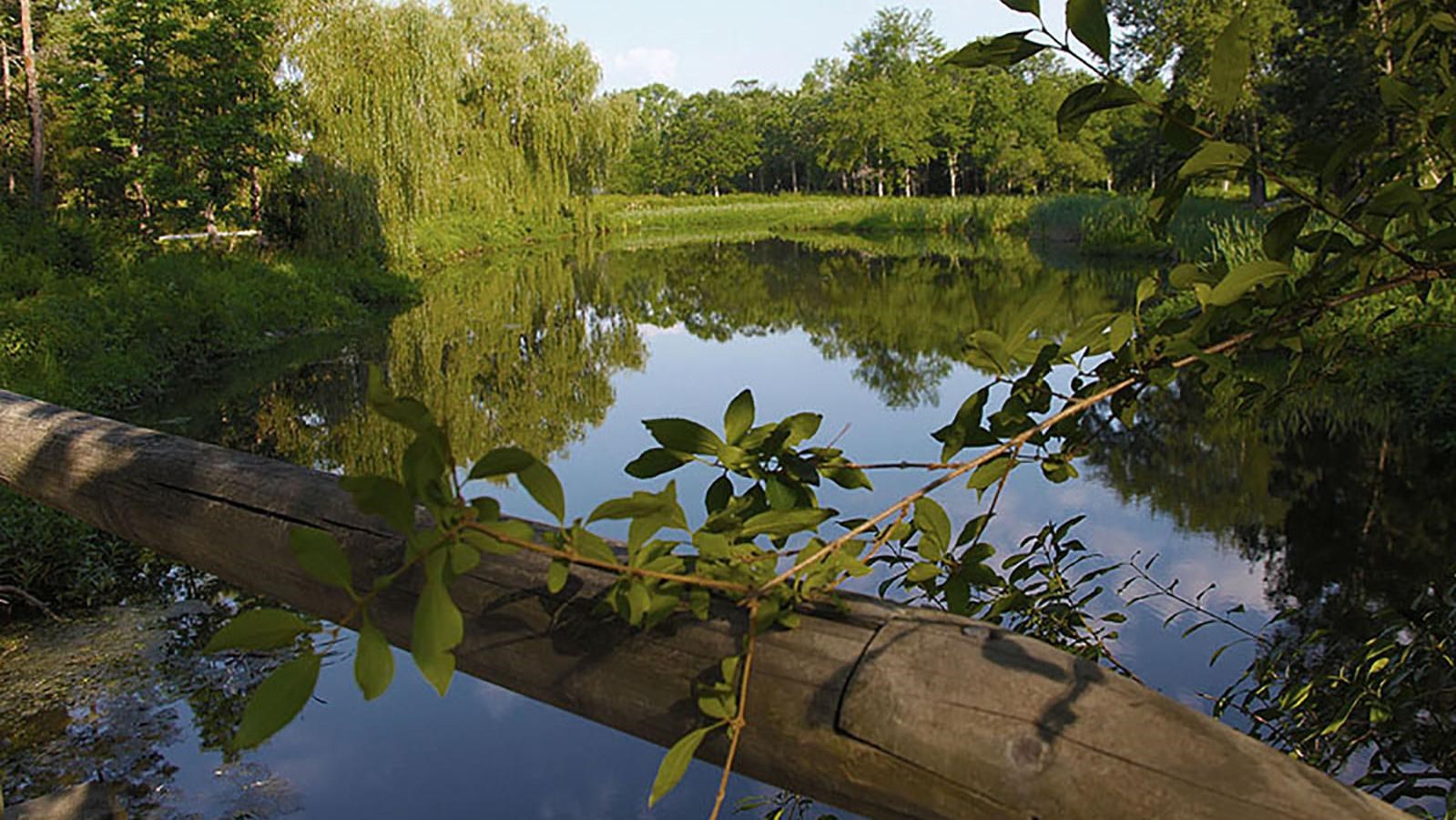Last updated: May 4, 2023
Place
The Pond

NPS/W.D. Urbin
Val-Kill's water resources have long played an active role in influencing land use and spatial organization of the area. No evidence of Native American settlements have been found within the park, possibly because of the wet and swampy land. The Fall-Kill that runs south through the center of the property was traditionally a slow moving, shallow, wide creek, resulting in a large wetland area through the center of the site. Low-lying areas west of the creek in the northern and southern regions of the site impeded agricultural or residential use in those areas.
The Roosevelts dammed the Fall-Kill in the 1920s and 1930s, changing the stream north and west of the Val-Kill cottages into a seven-acre pond. Numerous changes were made to the steam and pond between the 1920s and 1940s to enlarge and deepen the amount of open water as well as to further define the shoreline. When Val-Kill was the most intensively maintained, between 1936 and 1947, the pond had two distinct and separate components—one long narrow section due west of the cottages and a larger, round section to the north, near the mouth of the creek. Reduced maintenance from the 1940s onward allowed the wetland character to return. The pond's area of open water is greatly reduced from historic times.
Val-Kill was created on the east bank of the Fall-Kill, on a farm purchased by FDR in 1911. Prior to his ownership, the property had been worked by generations of family farmers, dating to the early 1800s. The site served as grazing land and cultivated fields for farmers based out of an agricultural complex on the west side of Violet Avenue, the road that bounds the west side of the site. It is likely that most of the site was devoid of trees and devoted to agriculture although much of the site would not have been considered prime farm land as it contained large areas of low wetland and some steep and rocky terrain.
